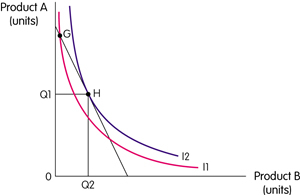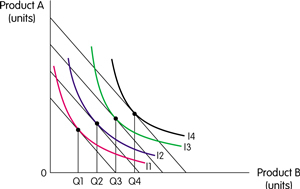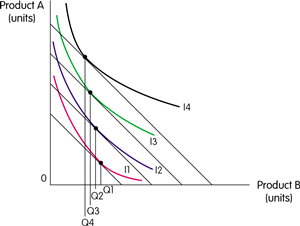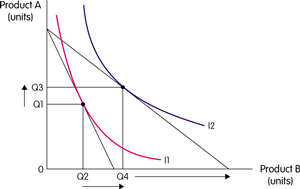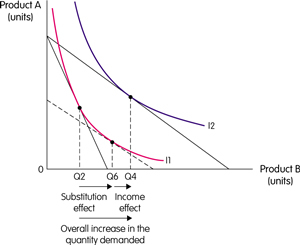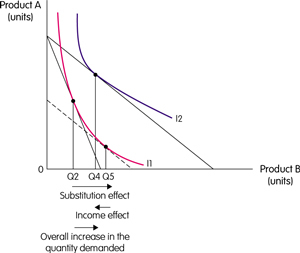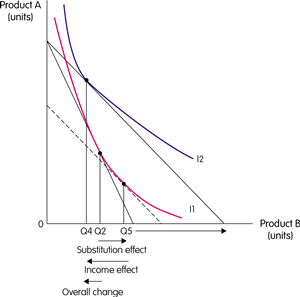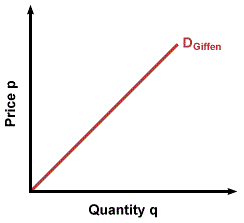Edited, memorised or added to reading queue
on 26-Nov-2016 (Sat)
Do you want BuboFlash to help you learning these things? Click here to log in or create user.
| status | not read | reprioritisations | ||
|---|---|---|---|---|
| last reprioritisation on | suggested re-reading day | |||
| started reading on | finished reading on |
| status | not read | reprioritisations | ||
|---|---|---|---|---|
| last reprioritisation on | suggested re-reading day | |||
| started reading on | finished reading on |
Flashcard 1420429495564
| status | not learned | measured difficulty | 37% [default] | last interval [days] | |||
|---|---|---|---|---|---|---|---|
| repetition number in this series | 0 | memorised on | scheduled repetition | ||||
| scheduled repetition interval | last repetition or drill |
Parent (intermediate) annotation
Open itM2-receptors modulate muscarinic potassium channels. [11] [12] In the heart, this contributes to a decreased heart rate.
Original toplevel document
Muscarinic acetylcholine receptor M2 - Wikipediais claim instead found no significant association between the CHRM2 gene and intelligence. [8] Olfactory behavior[edit] Mediating olfactory guided behaviors (e.g. odor discrimination, aggression, mating) [9] Mechanism of action[edit] <span>M 2 muscarinic receptors act via a G i type receptor, which causes a decrease in cAMP in the cell, generally leading to inhibitory-type effects. They appear to serve as autoreceptors. [10] In addition, they modulate muscarinic potassium channels. [11] [12] In the heart, this contributes to a decreased heart rate. They do so by the G beta gamma subunit of the G protein coupled to M 2 . This part of the G protein can open K + channels in the parasympathetic notches in the heart, which causes an outward current of potassium, which slows down the heart rate. Ligands[edit] Few highly selective M 2 agonists are available at present, although there are several non-selective muscarinic agonists that stimulate M 2 , and a number of selectiv
Flashcard 1421621988620
| status | not learned | measured difficulty | 37% [default] | last interval [days] | |||
|---|---|---|---|---|---|---|---|
| repetition number in this series | 0 | memorised on | scheduled repetition | ||||
| scheduled repetition interval | last repetition or drill |
Parent (intermediate) annotation
Open itG-Beta-gamma part of the G protein of M 2 can open K + channels, which slows down the heart rate
Original toplevel document
Muscarinic acetylcholine receptor M2 - Wikipediais claim instead found no significant association between the CHRM2 gene and intelligence. [8] Olfactory behavior[edit] Mediating olfactory guided behaviors (e.g. odor discrimination, aggression, mating) [9] Mechanism of action[edit] <span>M 2 muscarinic receptors act via a G i type receptor, which causes a decrease in cAMP in the cell, generally leading to inhibitory-type effects. They appear to serve as autoreceptors. [10] In addition, they modulate muscarinic potassium channels. [11] [12] In the heart, this contributes to a decreased heart rate. They do so by the G beta gamma subunit of the G protein coupled to M 2 . This part of the G protein can open K + channels in the parasympathetic notches in the heart, which causes an outward current of potassium, which slows down the heart rate. Ligands[edit] Few highly selective M 2 agonists are available at present, although there are several non-selective muscarinic agonists that stimulate M 2 , and a number of selectiv
Flashcard 1421631950092
| status | not learned | measured difficulty | 37% [default] | last interval [days] | |||
|---|---|---|---|---|---|---|---|
| repetition number in this series | 0 | memorised on | scheduled repetition | ||||
| scheduled repetition interval | last repetition or drill |
Parent (intermediate) annotation
Open itVasopressin regulates water excretion by increasing the water permeability of the collecting duct
Original toplevel document
Vasopressin receptor - Wikipedialuminal membrane of the collecting duct limit the antidiuretic action of vasopressin. Additionally, vasopressin selectively contracts efferent arterioles probably through the V 1 R, but not the afferent arteriole. [1] V 2 receptor[edit] <span>V 2 receptor (V 2 R) differs from V 1 R primarily in the number of sites susceptible to N-linked glycosylation; the V 1 R has sites at both the amino-terminus and at the extracellular loop, whereas the V 2 R has a single site at the extracellular amino-terminus. [1] The well known antidiuretic effect of vasopressin occurs via activation of V 2 R. [1] Vasopressin regulates water excretion from the kidney by increasing the osmotic water permeability of the renal collecting duct – an effect that is explained by coupling of the V 2 R with the G s signaling pathway, which activates cAMP. Interestingly, the V 2 R continues to activate G s after being internalized by β-arrestin rather than being desensitized. This internalized G s signaling by V 2 R is explained by the receptors ability to form "mega-complexes" consisting of a single V 2 R, β-arrestin, and heterotrimeric G s . [3] The increased intracellular cAMP in the kidney in turn triggers fusion of aquaporin-2-bearing vesicles with the apical plasma membrane of the collecting duct principal cells, increasing water reabsorption. [1] V 3 receptor[edit] The human V 3 receptor (V 3 R, previously known as V 1B R) is a G-protein-coupled pituitary receptor that, because of its scarcity, was only recently characteri
| status | not read | reprioritisations | ||
|---|---|---|---|---|
| last reprioritisation on | suggested re-reading day | |||
| started reading on | finished reading on |
Parent (intermediate) annotation
Open itVasopressin regulates water excretion by increasing the water permeability of the collecting duct
Original toplevel document
Vasopressin receptor - Wikipedialuminal membrane of the collecting duct limit the antidiuretic action of vasopressin. Additionally, vasopressin selectively contracts efferent arterioles probably through the V 1 R, but not the afferent arteriole. [1] V 2 receptor[edit] <span>V 2 receptor (V 2 R) differs from V 1 R primarily in the number of sites susceptible to N-linked glycosylation; the V 1 R has sites at both the amino-terminus and at the extracellular loop, whereas the V 2 R has a single site at the extracellular amino-terminus. [1] The well known antidiuretic effect of vasopressin occurs via activation of V 2 R. [1] Vasopressin regulates water excretion from the kidney by increasing the osmotic water permeability of the renal collecting duct – an effect that is explained by coupling of the V 2 R with the G s signaling pathway, which activates cAMP. Interestingly, the V 2 R continues to activate G s after being internalized by β-arrestin rather than being desensitized. This internalized G s signaling by V 2 R is explained by the receptors ability to form "mega-complexes" consisting of a single V 2 R, β-arrestin, and heterotrimeric G s . [3] The increased intracellular cAMP in the kidney in turn triggers fusion of aquaporin-2-bearing vesicles with the apical plasma membrane of the collecting duct principal cells, increasing water reabsorption. [1] V 3 receptor[edit] The human V 3 receptor (V 3 R, previously known as V 1B R) is a G-protein-coupled pituitary receptor that, because of its scarcity, was only recently characteri
Flashcard 1421657378060
| status | not learned | measured difficulty | 37% [default] | last interval [days] | |||
|---|---|---|---|---|---|---|---|
| repetition number in this series | 0 | memorised on | scheduled repetition | ||||
| scheduled repetition interval | last repetition or drill |
Parent (intermediate) annotation
Open itVasopressin regulates water excretion by increasing the water permeability of the collecting duct
Original toplevel document
Vasopressin receptor - Wikipedialuminal membrane of the collecting duct limit the antidiuretic action of vasopressin. Additionally, vasopressin selectively contracts efferent arterioles probably through the V 1 R, but not the afferent arteriole. [1] V 2 receptor[edit] <span>V 2 receptor (V 2 R) differs from V 1 R primarily in the number of sites susceptible to N-linked glycosylation; the V 1 R has sites at both the amino-terminus and at the extracellular loop, whereas the V 2 R has a single site at the extracellular amino-terminus. [1] The well known antidiuretic effect of vasopressin occurs via activation of V 2 R. [1] Vasopressin regulates water excretion from the kidney by increasing the osmotic water permeability of the renal collecting duct – an effect that is explained by coupling of the V 2 R with the G s signaling pathway, which activates cAMP. Interestingly, the V 2 R continues to activate G s after being internalized by β-arrestin rather than being desensitized. This internalized G s signaling by V 2 R is explained by the receptors ability to form "mega-complexes" consisting of a single V 2 R, β-arrestin, and heterotrimeric G s . [3] The increased intracellular cAMP in the kidney in turn triggers fusion of aquaporin-2-bearing vesicles with the apical plasma membrane of the collecting duct principal cells, increasing water reabsorption. [1] V 3 receptor[edit] The human V 3 receptor (V 3 R, previously known as V 1B R) is a G-protein-coupled pituitary receptor that, because of its scarcity, was only recently characteri
| status | not read | reprioritisations | ||
|---|---|---|---|---|
| last reprioritisation on | suggested re-reading day | |||
| started reading on | finished reading on |
Parent (intermediate) annotation
Open itG-Beta-gamma part of the G protein of M 2 can open K + channels, which slows down the heart rate
Original toplevel document
Muscarinic acetylcholine receptor M2 - Wikipediais claim instead found no significant association between the CHRM2 gene and intelligence. [8] Olfactory behavior[edit] Mediating olfactory guided behaviors (e.g. odor discrimination, aggression, mating) [9] Mechanism of action[edit] <span>M 2 muscarinic receptors act via a G i type receptor, which causes a decrease in cAMP in the cell, generally leading to inhibitory-type effects. They appear to serve as autoreceptors. [10] In addition, they modulate muscarinic potassium channels. [11] [12] In the heart, this contributes to a decreased heart rate. They do so by the G beta gamma subunit of the G protein coupled to M 2 . This part of the G protein can open K + channels in the parasympathetic notches in the heart, which causes an outward current of potassium, which slows down the heart rate. Ligands[edit] Few highly selective M 2 agonists are available at present, although there are several non-selective muscarinic agonists that stimulate M 2 , and a number of selectiv
| status | not read | reprioritisations | ||
|---|---|---|---|---|
| last reprioritisation on | suggested re-reading day | |||
| started reading on | finished reading on |
Subject 4. Consumer Equilibrium: Maximizing Utility Subject to the Budget Constraint
The budget constraint line separates consumption bundles that are attainable from those that are unattainable. A consumer will maximise utility by consuming on the highest possible indifference curve (i.e., we assume all income is spent). This is where an indifference curve is tangent to the highest possible budget line. A consumer could consume at G, for example, but would be on a higher indifference curve at H. This means that to maximise utility the consumer would consume Q1 of product A and Q2 of product B. The consumer is maximising utility where the budget line and indifference curve are tangent, i.e., MU B /MU A = P B /P A . An Increase in Income An increase in income shifts the budget line out parallel. The new combinations of products that maximise utility can be id
| status | not read | reprioritisations | ||
|---|---|---|---|---|
| last reprioritisation on | suggested re-reading day | |||
| started reading on | finished reading on |
Subject 4. Consumer Equilibrium: Maximizing Utility Subject to the Budget Constraint
ximise utility the consumer would consume Q1 of product A and Q2 of product B. The consumer is maximising utility where the budget line and indifference curve are tangent, i.e., MU B /MU A = P B /P A . <span>An Increase in Income An increase in income shifts the budget line out parallel. The new combinations of products that maximise utility can be identified. If this is a normal good, an increase in income increases the quantity demanded. Inferior goods have a negative income elasticity of demand. Demand falls as income rises. <span><body><html>
| status | not read | reprioritisations | ||
|---|---|---|---|---|
| last reprioritisation on | suggested re-reading day | |||
| started reading on | finished reading on |
| status | not read | reprioritisations | ||
|---|---|---|---|---|
| last reprioritisation on | suggested re-reading day | |||
| started reading on | finished reading on |
| status | not read | reprioritisations | ||
|---|---|---|---|---|
| last reprioritisation on | suggested re-reading day | |||
| started reading on | finished reading on |
| status | not read | reprioritisations | ||
|---|---|---|---|---|
| last reprioritisation on | suggested re-reading day | |||
| started reading on | finished reading on |
Stål – Wikipedia
källor (fotnoter). Uppgifter utan källhänvisning kan ifrågasättas och tas bort. Diskutera på diskussionssidan. För efternamnet Stål/Ståhl och personer som bär detta namn, se Ståhl. [imagelink] Tillverkning av stål i elektrougn <span>Stål (latinskt namn: chalybs eller aciarium) är en legering som till största delen består av järn. Kol är det viktigaste legeringsämnet och ingår alltid i varierande mängd i stål. Moderna stålsorter innehåller även många andra ämnen (exempelvis krom, molybden och vanadin) vilket ger stålet olika egenskaper. Stål med små mängder legeringsämnen utöver kol kallas olegerade stål eller kolstål. Stål som innehåller högre halt legeringsämnen utöver kol kallas legerade stål. [1] Kolstål är magnetiskt, men austenitiskt stål är det inte. Dock avtar magnetismen med ökad temperatur
Flashcard 1421678087436
| status | not learned | measured difficulty | 37% [default] | last interval [days] | |||
|---|---|---|---|---|---|---|---|
| repetition number in this series | 0 | memorised on | scheduled repetition | ||||
| scheduled repetition interval | last repetition or drill |
Parent (intermediate) annotation
Open itG-Beta-gamma part of the G protein of M 2 can open K + channels, which slows down the heart rate
Original toplevel document
Muscarinic acetylcholine receptor M2 - Wikipediais claim instead found no significant association between the CHRM2 gene and intelligence. [8] Olfactory behavior[edit] Mediating olfactory guided behaviors (e.g. odor discrimination, aggression, mating) [9] Mechanism of action[edit] <span>M 2 muscarinic receptors act via a G i type receptor, which causes a decrease in cAMP in the cell, generally leading to inhibitory-type effects. They appear to serve as autoreceptors. [10] In addition, they modulate muscarinic potassium channels. [11] [12] In the heart, this contributes to a decreased heart rate. They do so by the G beta gamma subunit of the G protein coupled to M 2 . This part of the G protein can open K + channels in the parasympathetic notches in the heart, which causes an outward current of potassium, which slows down the heart rate. Ligands[edit] Few highly selective M 2 agonists are available at present, although there are several non-selective muscarinic agonists that stimulate M 2 , and a number of selectiv
